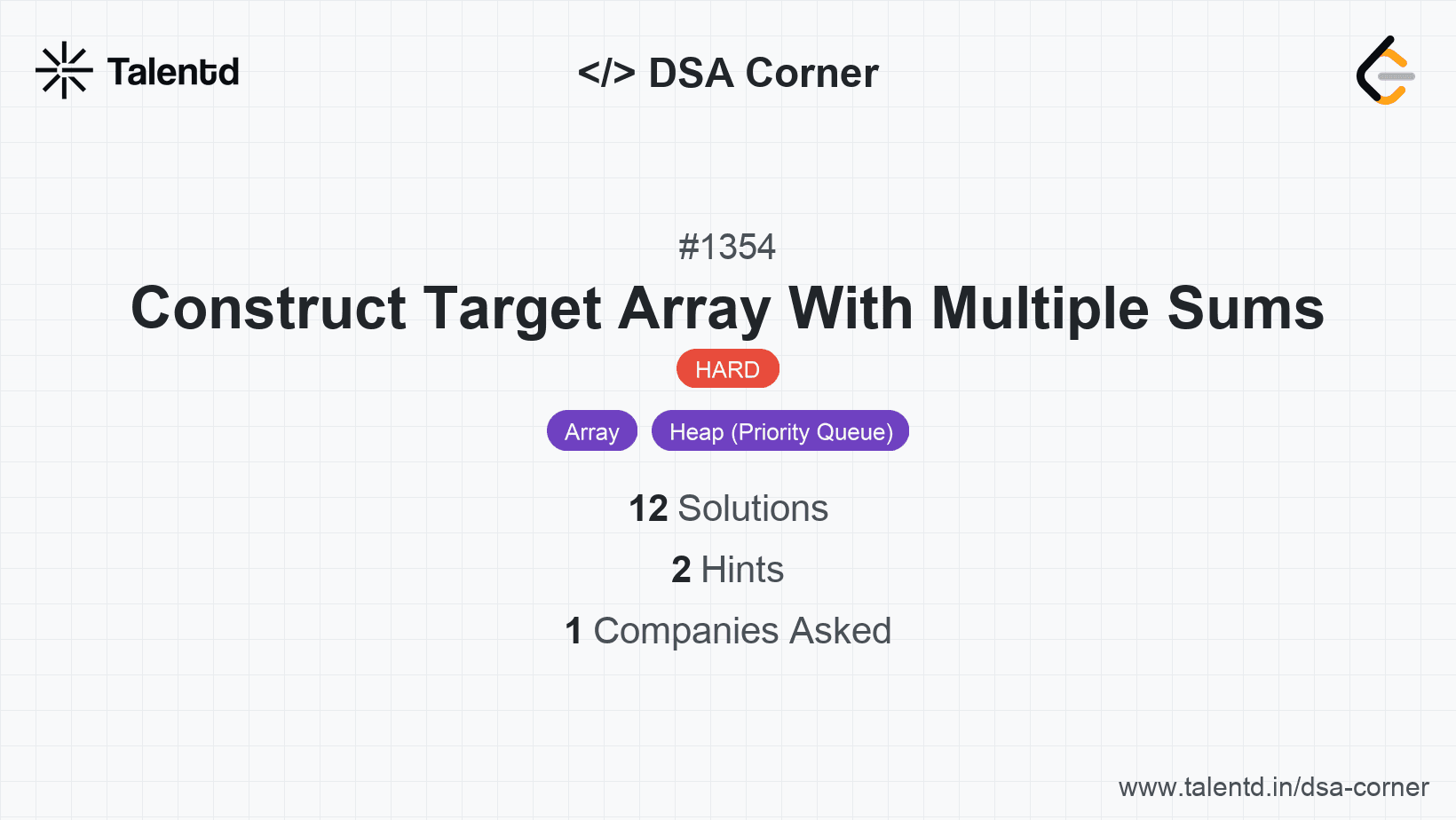
Sponsored
Sponsored
This approach uses a max-heap (priority queue) to efficiently track and operate on the largest element. The primary idea is to reverse the operation: starting from the target array, every large element in the target can be seen as the result of adding all smaller elements in the array to one of the array's elements during the last operation. By repeatedly transforming the largest element in this manner, we can verify if it is possible to reach the initial array of ones.
The time complexity is O(n log n * log maxValue) due to sorting and heap operations, where n is the number of elements and maxValue is the maximum integer in the target. The space complexity is O(1) since we are sorting and using in-place operations optimistically.
1import heapq
2
3def isPossible(target):
4 total = sum(target)
5 target = [-x for x
This Python solution takes advantage of the heapq library to create a max-heap by using negative values since Python only provides a min-heap by default. The overall strategy is to continually control and transform the largest element, ensuring the constraints allow the construction of the target from the base array.
This approach utilizes a sort and modulo method to reverse-track the process involved in constructing the target array from an array containing ones. It revolves around repeatedly reducing the maximum value to the remainder after division with the sum of other elements.
Steps include:
Time complexity is O(n log n * log maxValue); space complexity is O(1) when using in-place operations for sorting and arithmetic.
1function isPossible(target) {
2 let total = target.reduce((a, b) => a + b, 0);
3 target.sort((a, b) => b - a);
4
5 while (target[0] !== 1) {
6 const largest = target[0];
7 const rest = total - largest;
8
9 if (rest === 0 || largest <= rest) return false;
10
11 const newValue = largest % rest;
12 if (newValue === 0) return false;
13
14 target[0] = newValue;
15 total = total - largest + newValue;
16 target.sort((a, b) => b - a);
17 }
18 return true;
19}
20
21console.log(isPossible([8, 5]));In JavaScript, deliberate modifications to the array by constant sorting captures identical workings observed in other languages, reaffirming the versatility of this approach in determining manipulability and potential transformation into a starting array via consistent leadership by maxima.